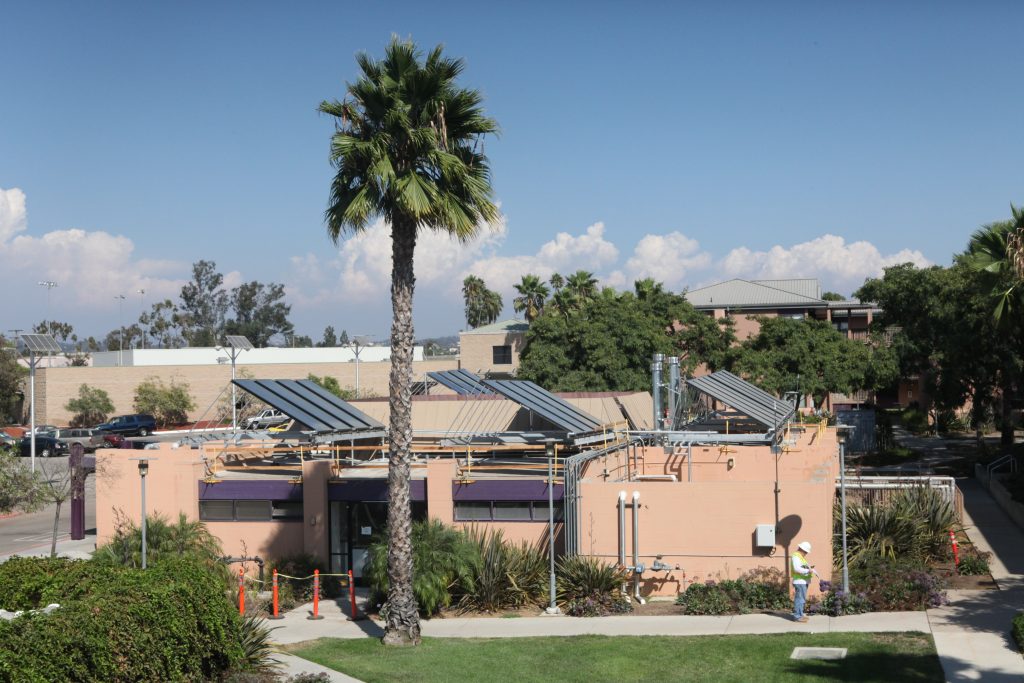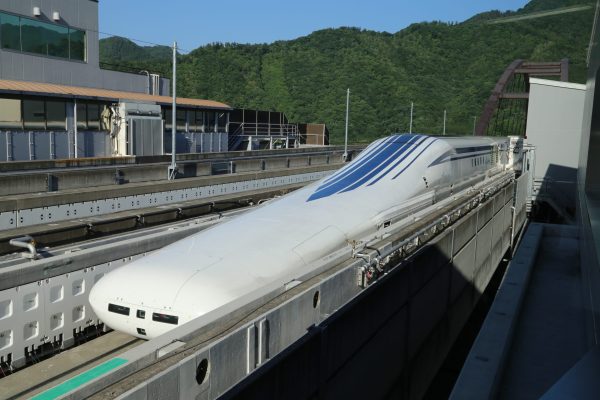By Raul Herrera, P.E., LEED AP, M.SAME
As America undergoes a transformative shift to renewable and sustainable power systems, continuing to meet the energy needs of mission-critical installations requires a comprehensive approach that considers economic and cyber factors along with emerging technologies.
In the domain of national infrastructure, energy stands out as both a fundamental thread and dynamic pattern that shapes the resilience and sustainability of our nation. The engineering community, including designers and equipment vendors, are some of the key players, diligently applying scientific and technical knowledge to innovate and improve energy infrastructure.
The transformation toward renewable energy is an example of a comprehensive challenge that encompasses not just the adaptation of modern technologies but the sustainable integration of them into the current grid systems and local facility energy resiliency microgrids.
Sustainable Transformation
America’s energy paradigm is undergoing a considerable shift in its approach to energy systems—pivoting away from fossil fuels to a more diversified portfolio of renewable and sustainable power. Wind, solar, hydropower, bioenergy, geothermal, and other diversified energy sources are no longer fringe players; they are increasingly central to the nation’s energy strategy. This evolution demands a systematic approach. Modern technologies must not only coexist but synergize with established frameworks and renewable integration that is resilient, efficient, and integrates with existing infrastructure.
Engineering and vendor teams work on cross-disciplinary integration and strategies, often involving the implementation of advanced control systems that manage inputs from multiple utilities and variable renewable sources. This requires the technological acumen to design and implement as well as the strategic foresight to plan for future scalability and adaptability.

These renewable sources are increasingly vital as federal agencies, including the Department of Defense, focus on clean, reliable, and secure energy sources to power their missions. As renewable energies ascend from supplementary to central roles in the national energy matrix, they bring forward a multifaceted doctrine of energy resilience. For instance, the U.S. military is investing heavily in microgrid technologies to ensure uninterrupted operations, even when traditional energy grids falter. Microgrids are sustainable and strategically vital by providing redundancy and security to critical operations. The most common sources of generation and storage are reciprocating engines fueled by diesel, natural gas, solar photovoltaic panels, and battery energy storage systems.
Innovative Technologies
In an age when federal infrastructure modernization is more than a mandate, it is also a proving ground for innovation where we must integrate emerging technologies into a unified system. Federal infrastructure modernization is a strategic imperative, presenting an opportunity for innovation in engineering and sustainable design.
The integration of these technologies into a cohesive infrastructure requires a precise and comprehensive systems engineering approach, which presents both a challenge and an opportunity. Rigorous feasibility studies, sophisticated design, and strategic implementation are required to ensure that the transition to renewable energies is environmentally sound and grounded in reliable, scalable, and cost-effective engineering solutions. Assessing current energy systems, forecasting long-term power needs, and planning for the integration of renewable energy sources and microgrids is increasingly important now for diversification of energy sources.
Engineering professionals must help ensure that the transition to sustainable energy is not just visionary but also practical and grounded in sound economics and reliable engineering.
Cleaner, More Efficient. The importance of decarbonization, energy efficiency, and proven technology like cogeneration and combined heat and power systems cannot be overlooked. The implementation of improved, cleaner, and more efficient generators with the ability to use varied fuel sources is critical. Emerging technologies such as hydrogen production, ammonia, methanol, green/blue chemicals, fuel cells, biofuels, and advanced energy storage systems create a new energy doctrine that is resilient in the face of changing global conditions and threats. The challenge is to adopt emerging technologies while doing so in a way that is practical, secure, sustainable, and cost-effective.
Engineering professionals must help ensure that the transition to sustainable energy is not just visionary but also practical and grounded in sound economics and reliable engineering.
Ensuring Viability. Innovative energy solutions, however, need to be analyzed to ensure they are viable and sustainable long-term opportunities. The engineering process involves evaluating the entire lifecycle of projects—from initial costs to long-term operational expenses—to ensure that the investments are sound and that they provide the intended economic benefits.
Factors must consider the lifecycle of energy solutions, encompassing aspects such as procurement, construction, management, and optimization to ensure economic viability. Strategies to reduce peak grid demand translates into lower energy costs, providing an economic edge to sustainability efforts.
Cyber-Resilient Systems
In today’s interconnected world, because energy infrastructure is integrated into our nation’s critical systems, security is paramount. Cybersecurity threats have expanded from informational data breaches to potentially crippling energy systems, underscoring the need for robust defenses. With the ever-increasing interconnection of physical infrastructure and digital control systems, cybersecurity has become an inseparable aspect of infrastructure engineering.
It is imperative that designs consider cyber resilience in addition to the physical durability and environmental impacts of a system. The engineering discipline now extends into the realm of cyber-physical systems, where security is designed into the infrastructure from inception, not bolted on as an afterthought.
While engineering solutions are applied within national borders, knowledge and best practices are often derived from global knowledge. Lessons from international advancements in sustainable engineering are crucial for informing the strategies adopted by federal agencies. This global exchange of information and expertise enriches the engineering solutions crafted for domestic infrastructure, ensuring that they are at the cutting edge of technology and best practices.
Energy For the Future
The role of engineering in shaping the nation’s energy independence and security is more critical than ever. This involves anticipating future demands, potential disruptions, and technological advancements. Through a collaborative effort within the engineering community, solutions are being designed to not only respond to current needs but staying flexible enough to adapt to future changes. We must aim to engage stakeholders across the spectrum (from federal decision-makers to industry leaders and the informed public) by blending insights into market trends and implementation strategies while infusing innovation and practicality against the critical role of security.
In every engineering endeavor, the overarching goal is to balance sustainability, security, and economic viability. As a result, the engineering community contributes to a resilient infrastructure capable of withstanding the challenges of today and tomorrow. This collective effort is the cornerstone for building a sustainable and energy-independent future.
Building Tomorrow’s Energy Systems
A power plant and microgrid project at Marine Corps Air Station Miramar, Calif., serves as a prime example of sustainable energy innovation in federal infrastructure. This advanced microgrid, a first for the Department of Defense, integrates landfill power generation and showcases a significant shift toward emerging, diverse, and sustainable energy sources. Its sophisticated control system enables fully automated and economic operation, highlighting the strategic foresight in adaptable energy system design.
The Miramar microgrid incorporates renewable energy and allows operations at mission-critical facilities to continue if the utility power grid is compromised or damaged. The system was designed to determine the most economic use of the various sources of site power: existing renewable solar and landfill gas generation, a newly installed 6.45-MW natural gas and diesel generation, and grid power.
The state-of-the-art energy system is the first of its kind to successfully integrate a separate landfill power generation system into the microgrid, powering the entire installation. Additionally, it is the first to operate in fully automated mode when microgrid power was restored to the critical loads automatically by the microgrid power control system software after a simulated utility power outage. And it is the first to operate in economic mode when the microgrid manages the landfill, solar, and plant generation assets to provide most cost-effective power sources.
Resilience was an important emphasis of the project. The system is capable of autonomously powering critical base operations. Moreover, its design facilitates economic dispatch and additional revenue generation, demonstrating the economic viability of sustainable solutions.
Engineered with a focus on cybersecurity, the project successfully integrates robust, cyber-resilient infrastructure in modern energy systems, a key aspect in today’s interconnected energy landscape. Overall, the microgrid project at Marine Corps Air Station Miramar stands as a testament to the engineering ingenuity in merging sustainability, economic efficiency, and resilience in federal energy projects.
Raul Herrera, P.E., LEED AP, M.SAME, is Federal Energy Security Director, Black & Veatch; herrerara@bv.com.
More News from TME
-

Developing a Maglev Network for National Defense
A transportation network leveraging superconducting magnetic levitation technologies would bring benefits for logistics, surface transportation, and energy storage, as well as strengthen national defense priorities and the defense industrial base. -

Meeting Training Needs with a One-of-a-Kind Diving Facility
In the planning process of a new Expeditionary Maritime Operations Center at Joint Expeditionary Base Little Creek-Fort Story, close collaboration and careful design was necessary to provide a path forward for a substantially deep training pool and meet the needs of advanced diving teams and other maritime operators. -

Delivering Successful Projects for USACE Far East District
Establishing a physical presence in Korea and collaborating with local contractors can assist U.S.-based firms in successfully delivering federal projects on the peninsula.